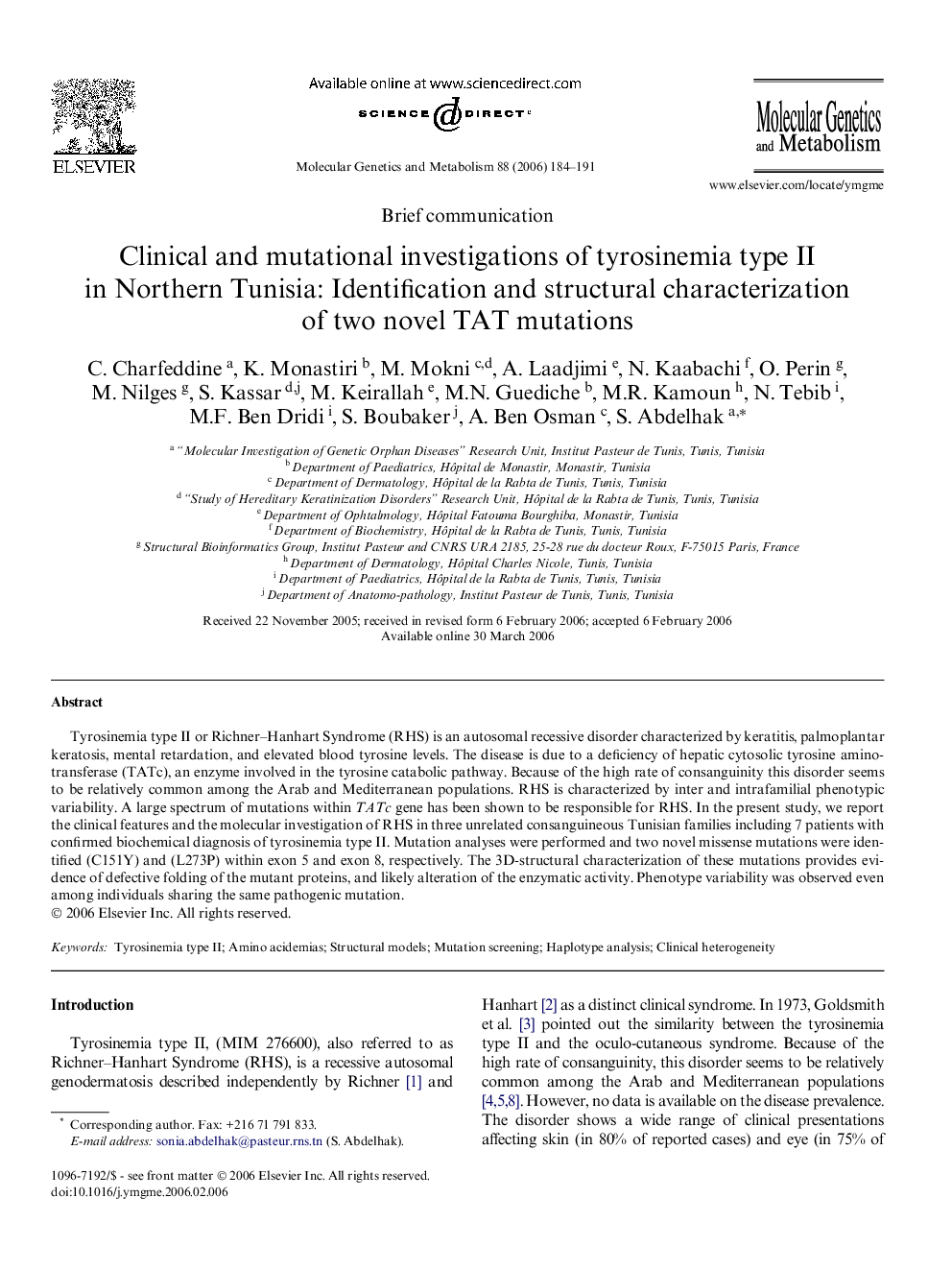| Article ID | Journal | Published Year | Pages | File Type |
|---|---|---|---|---|
| 1999179 | Molecular Genetics and Metabolism | 2006 | 8 Pages |
Tyrosinemia type II or Richner–Hanhart Syndrome (RHS) is an autosomal recessive disorder characterized by keratitis, palmoplantar keratosis, mental retardation, and elevated blood tyrosine levels. The disease is due to a deficiency of hepatic cytosolic tyrosine aminotransferase (TATc), an enzyme involved in the tyrosine catabolic pathway. Because of the high rate of consanguinity this disorder seems to be relatively common among the Arab and Mediterranean populations. RHS is characterized by inter and intrafamilial phenotypic variability. A large spectrum of mutations within TATc gene has been shown to be responsible for RHS. In the present study, we report the clinical features and the molecular investigation of RHS in three unrelated consanguineous Tunisian families including 7 patients with confirmed biochemical diagnosis of tyrosinemia type II. Mutation analyses were performed and two novel missense mutations were identified (C151Y) and (L273P) within exon 5 and exon 8, respectively. The 3D-structural characterization of these mutations provides evidence of defective folding of the mutant proteins, and likely alteration of the enzymatic activity. Phenotype variability was observed even among individuals sharing the same pathogenic mutation.
